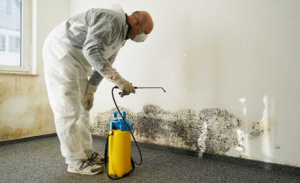When you’re building a deck, it is essential to have a good foundation. The proper footings help prevent frost heave and provide a sturdy platform for your deck. Proper footings also ensure that the deck will remain stable over time.

A framing frame makes it easier to mark footing holes and align post bases. Use joist hangers on the ledger board to fasten decking boards. Make sure to use quality framing hardware like double-dipped hot galvanized nails. For professional help, contact Virginia Deck Builders.
A deck can increase the value of your home and give you easy access to the outdoors. It’s also a great place to entertain friends and family. However, the cost of a deck can vary depending on the materials used. Some materials are more affordable than others, and some require regular maintenance. Choosing the right deck material can reduce your costs and improve your overall outdoor living experience.
The most significant factor in the cost of deck building is the size and design of the deck. A larger deck will cost more to build than a smaller one. The deck’s construction materials and any add-on features will also affect its price. For example, adding a hot tub can significantly increase your deck’s cost. The capacity of the hot tub, its features, and its installation intricacies will all impact your costs.
Another significant factor in the cost of deck building is labor expenses. These vary by location and contractor rates. It’s important to choose a contractor with a good reputation and experience. It’s also a good idea to ask for a bid before hiring a contractor.
Before you begin the construction of your deck, it’s important to research local building codes and find out if you need a permit. Most areas require a permit for decks that are over a certain height or size. If you skip this step, you could be fined or forced to tear down your deck. A permit will also help you avoid issues with your homeowners insurance.
While there are many benefits of adding a deck to your home, it is also a major investment. You’ll want to make sure that you are comfortable with the cost before making a final decision. You can use an online cost calculator to estimate the cost of your deck project.
The first step in a deck-building project is clearing the area and digging footings. Then, you’ll need to pour concrete and install the posts. You can hire a professional to do this work for you, but the process is more time-consuming than doing it yourself.
Materials
Many people think that wood is the only choice when it comes to building a deck, but in reality, there are several different options. Some are more expensive upfront, but may offer better long-term value. Others, such as composite and PVC, require less maintenance and won’t rot or attract insects. Some are even resistant to heat and moisture, making them a great option for outdoor use.
The boards that make up the floor of your deck are called “decking.” They can be made from a variety of materials, including natural wood, composite, and PVC. Some types of decking are also designed with a raised profile to prevent pooling water and improve drainage. In addition, a material called flashing is installed around critical areas of your deck to help prevent water damage and rot. A deck that is properly flashed can last up to 15 years.
Wood decking is one of the most popular choices, but it requires regular maintenance to prevent rot and insect infestation. The best wood for decking is pressure-treated lumber, which is easy to find and relatively inexpensive. It is permeated with chemicals that inhibit termites, mildew, and fungus and can be cut easily with a saw. However, the chemicals in this type of wood can be toxic if ingested or inhaled, so it is important to wear gloves and a mask when working with it. In addition, scraps should never be burned to avoid releasing harmful vapors.
If you want to enjoy the beauty of natural wood, but would prefer a more durable material, consider cedar. This type of natural wood gradually weathers to a soft gray color and contains tannins that make it resistant to rot, termites, and other pests. However, it is more expensive than other woods, and its color can fade in areas with extreme weather conditions.
A good deck is supported by joists and beams that are attached to the house. It is important that these supports be properly installed, as improper construction can lead to structural problems and potential safety hazards. A professional deck builder will secure these structures with galvanized or stainless steel connectors that are designed to hold the posts above the concrete piers and the ground. This method satisfies codes and will prevent rot from ground contact, which is a common problem in wood-frame decks.
Design
When planning the layout of a deck, there are many things to consider. You should consider the purpose of the deck and how it will fit into the style of your home. You should also consider the cost of materials and labor. If you are a do-it-yourselfer, you can save money by choosing less expensive material. You should also be aware of local codes and building requirements. You may need to submit site plans and a permit application. Once your plans are approved, you can start construction.
If your deck is built from wood, you should consider the colors and grain. Using a natural-looking material will give your deck a more natural appearance and make it look more like a part of the house. You can also use a color that matches or complements your home’s trim. Another important consideration is how your deck will be used. If you plan to entertain, you will want to have enough space for food and drinks. You can also incorporate stairs and a ramp for handicapped access. Depending on the weather and climate conditions where you live, you may need to cover your deck in the off-seasons.
A stairway is the most common way to get onto a deck, but a ramp may be easier for people with limited mobility. A ramp will also make it easier to wheel in heavy garden carts or grills. For safety, a handrail is recommended.
The deck framing should be a minimum of 2 x 6 boards with a joist every 8 feet. A joist is a long, sturdy structure that lays across the beams and supports the decking. The decking should be attached to the joists with fasteners that are 16 inches apart. The rim joist, which is the outermost joist, should be attached to the existing wall of your house with sheathing and at least 1 4 inch fasteners.
A deck should be constructed below the frost line to prevent damage to the foundations and to the deck. In addition, it is a good idea to avoid soil compaction, which can cause heaving. A heaved deck can be unsightly, and it can also undermine the foundations of your home.
Installation
Before you begin deck construction, you must decide what features are important to the function and aesthetic of your new deck. This includes whether you want to use it as a private retreat, dining area, or entertainment space. It is also important to consider the location of your deck, as it will influence sun exposure and privacy, as well as how easily you can access your house from it. Then you can create a detailed design, which should include dimensions and layout of the deck and its features. This will allow you to navigate local building codes and ensure compliance with stringent regulations.
Once you have a firm idea of your deck’s dimensions, it is time to purchase the necessary materials and tools for construction. This will include the decking boards, joists, beams, concrete or helical footings, and fasteners. You will also need a level, tape measure, power drill, chalk line, and shovel. In addition, you will need to hire a skilled contractor to help with the installation process.
The first step in deck construction is to prepare the building site. Your contractor will remove the existing topsoil and compact the ground. Then, he will lay landscaping fabric and gravel to ensure a strong base for the deck. He will then dig post holes according to local building code requirements. He may use concrete or helical footings, depending on the climate and the ground’s condition.
After a strong foundation is laid, your contractor will begin constructing the deck’s frame. He will install the rim and interior joists, which form the principle framework of your deck. He will then attach the joists to the ledger board using metal joist hangers. These are essential to the structural integrity of your deck. Once the joists are installed, your contractor will construct a fascia from composite or wood material and install it along the perimeter of the deck.
Finally, your contractor will install the railings and balusters. These will provide safety and security, as well as enhance the visual appeal of your deck. He will also install posts at strategic locations, ensuring that they are properly aligned and secure.








